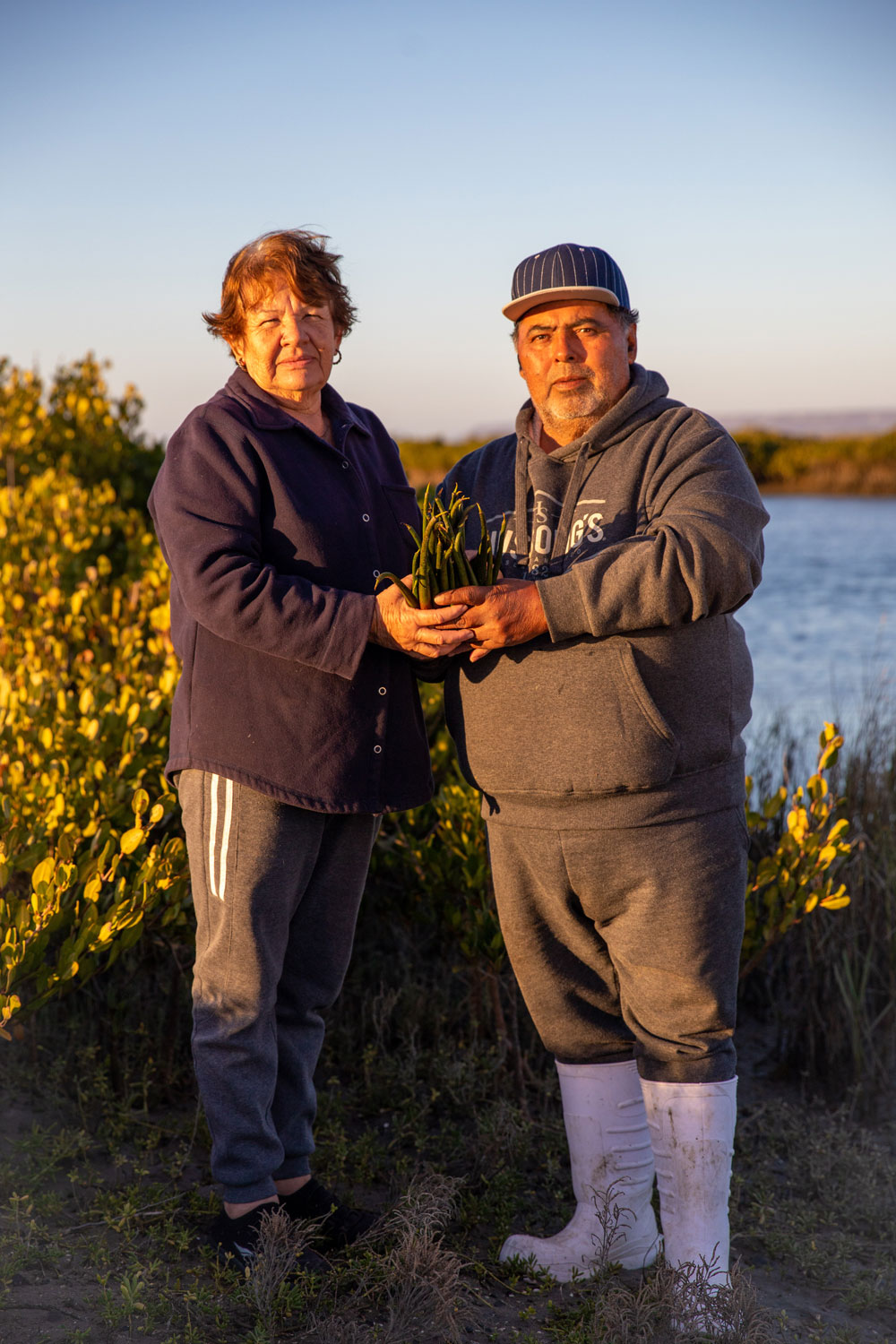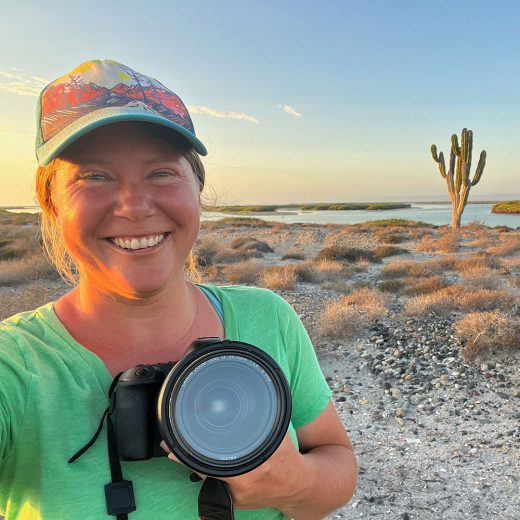This story was originally published by Hakai Magazine.
The sun sits low in the sky as David Borbón walks from one young mangrove to another, treading carefully so as not to disturb their roots. A golden glow lights the plants as he delicately checks for flowers and new growth, removing strands of dried algae and seagrass that accumulate on the saplings with the coming and going of tides. Every so often, he lets out a joyful cry upon finding a new propagule — a small, green bean–shaped seedling — growing on a tree he has planted: “My grandchild!” He takes out his phone to capture a picture of the new family member. It has taken him over a decade to get to this moment — a shoreline filled with thriving mangroves where before there was only sand — his devotion to his work unwavering.
Back in his boat, we slowly navigate the narrow channels from Borbón’s mangroves to his nearby home in the small fishing community of Campo Delgadito, mindful of our course with the dropping tide. Shorebirds scurry on the exposed mudflats, digging for their next meal. Situated on the Pacific coast about halfway down the peninsula of Baja California, Mexico, El Delgadito — “the little narrow one” — is a long spit of land jutting northwest into the mouth of Laguna San Ignacio. It’s home to 54 permanent residents, with up to 85 inhabitants during the most important fishing seasons.
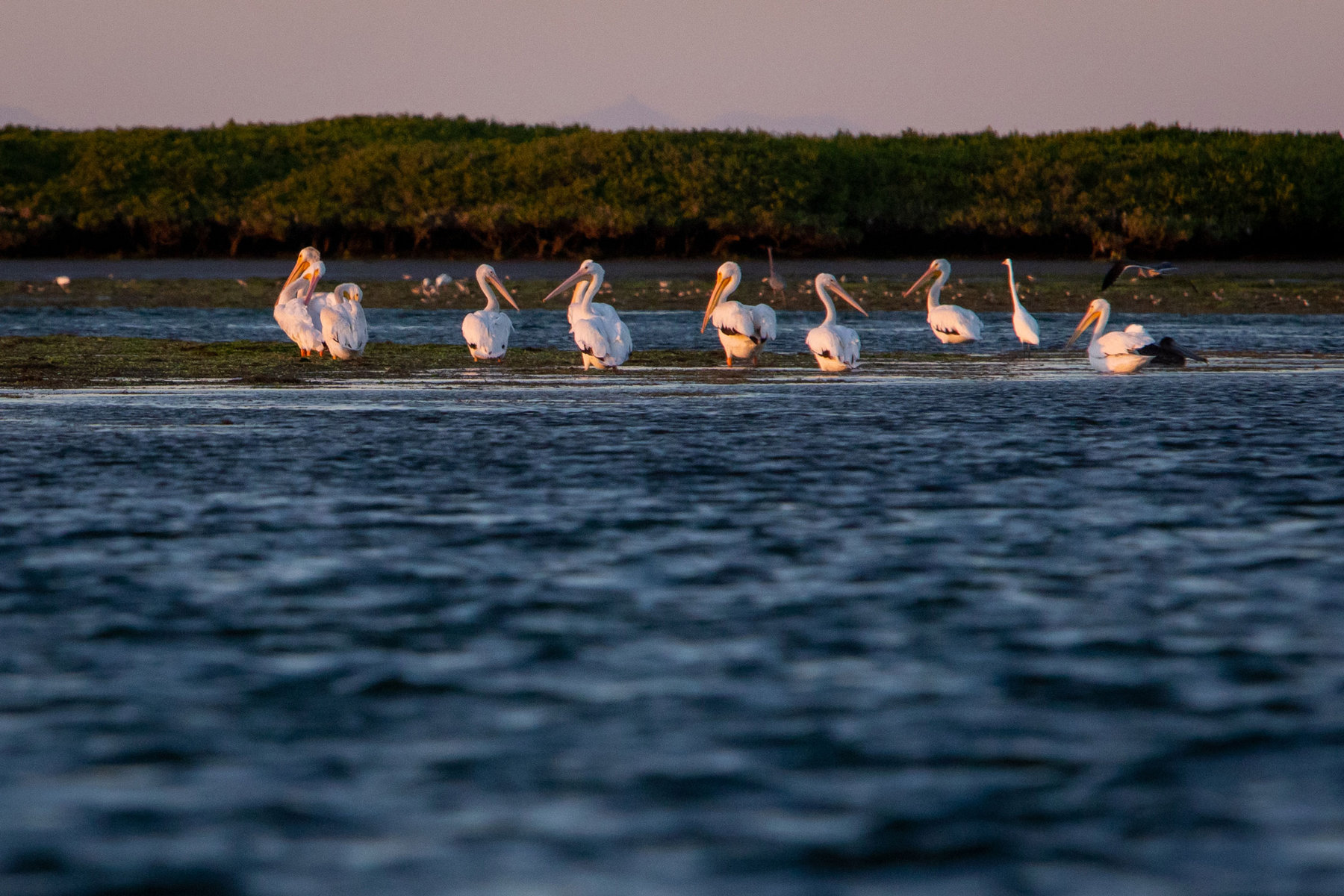
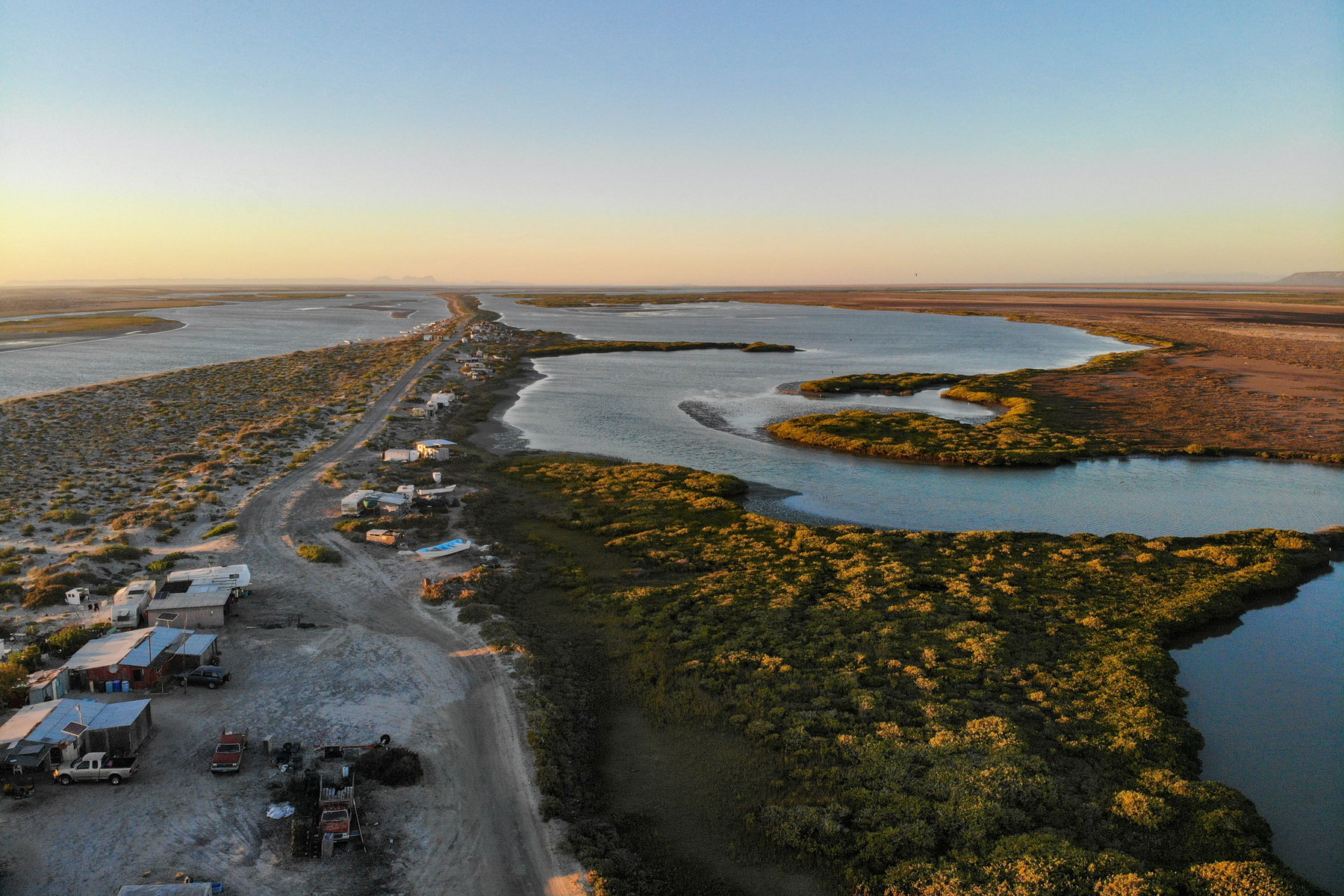
Borbón first arrived in El Delgadito as a young man in 1980, and he returned seasonally for the fishing — lobster, sea bass, halibut and clams. “[Back then], mangroves were just branches that were in the way of navigating to go fishing. I didn’t have the slightest idea of their importance,” he recalls. By the time he permanently settled in the community in the early 2000s, he was hearing stories of overfishing, even in this remote area. Fishermen boated farther, used more gear and more gas, yet still came back with smaller catches and smaller fish. Borbón and his wife, Ana María Peralta, could see the changes but weren’t sure what to do. A conversation with their daughter, who was away at university, gave them insight into their next steps. She told them what she had been learning about mangroves: how they prevented coastal erosion, stored carbon and provided a nursery habitat for myriad fish and crustacean species, many the same as those Borbón and other fishermen in El Delgadito were catching. The trees he had barely paid any attention to became the sole focus of his attention.
Four species of mangroves — red, white, black and sweet — grow throughout the state of Baja California Sur, which covers the lower half of the Baja California peninsula, and elsewhere in tropical and subtropical latitudes around the world. Mangroves are perhaps not what jumps to mind in desert ecosystems like that of El Delgadito, however, which sits less than one-half of one degree south of all mangroves’ northern limit in the entire eastern Pacific. Mangroves here grow short and stunted compared with their tropical counterparts — even when fully developed, a species that reaches over 25 meters in height in the tropics may barely make two meters in this region. Their small stature doesn’t make them any less mighty from the standpoint of the ecological services they provide. Studies in Baja California Sur and the adjacent Gulf of California have shown that not only do fisheries landings increase in areas where there are more abundant mangroves but also that these mangroves match or even outperform tropical mangrove ecosystems in their carbon sequestration abilities.
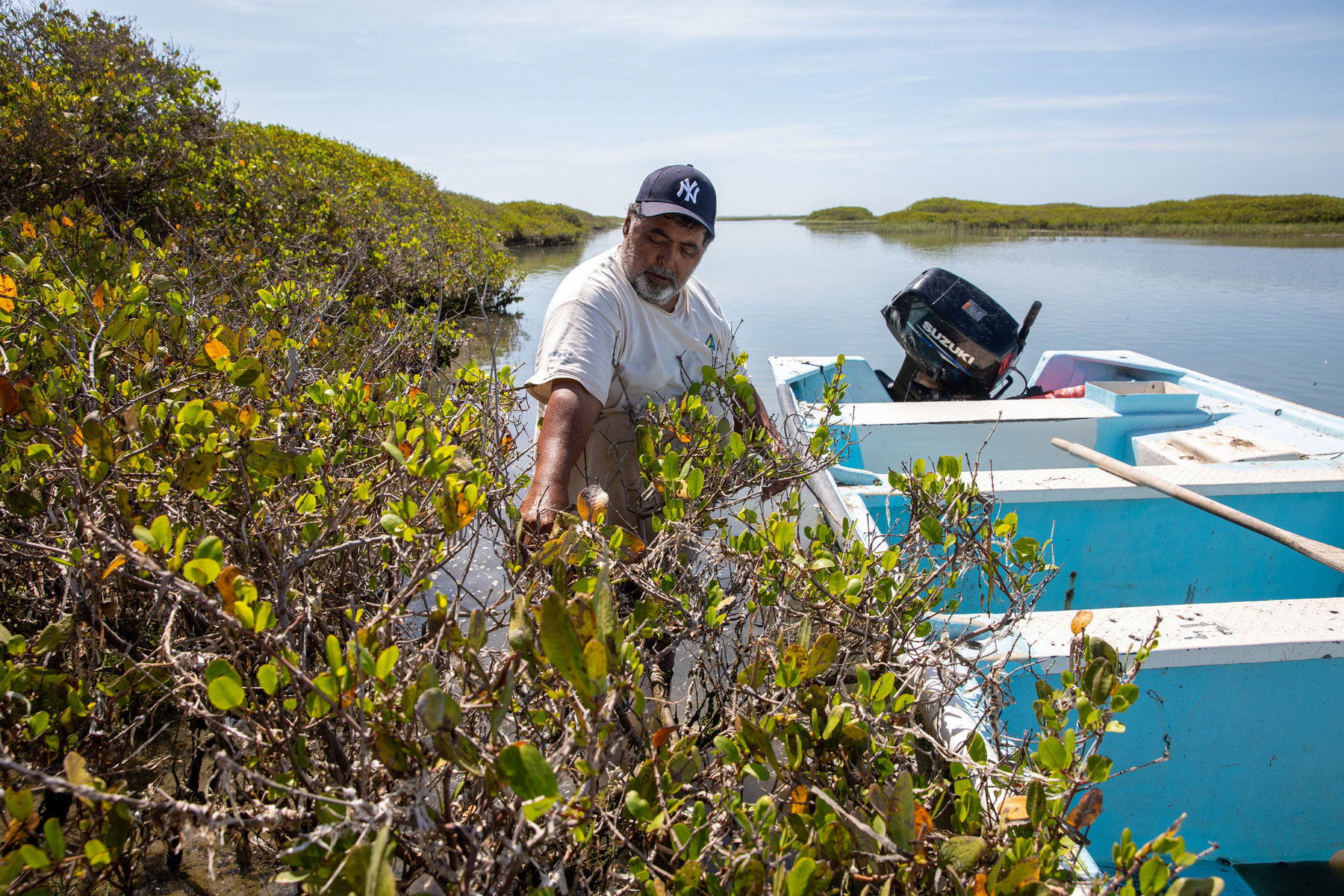
Weighed down by negative news?
Our smart, bright, weekly newsletter is the uplift you’ve been looking for.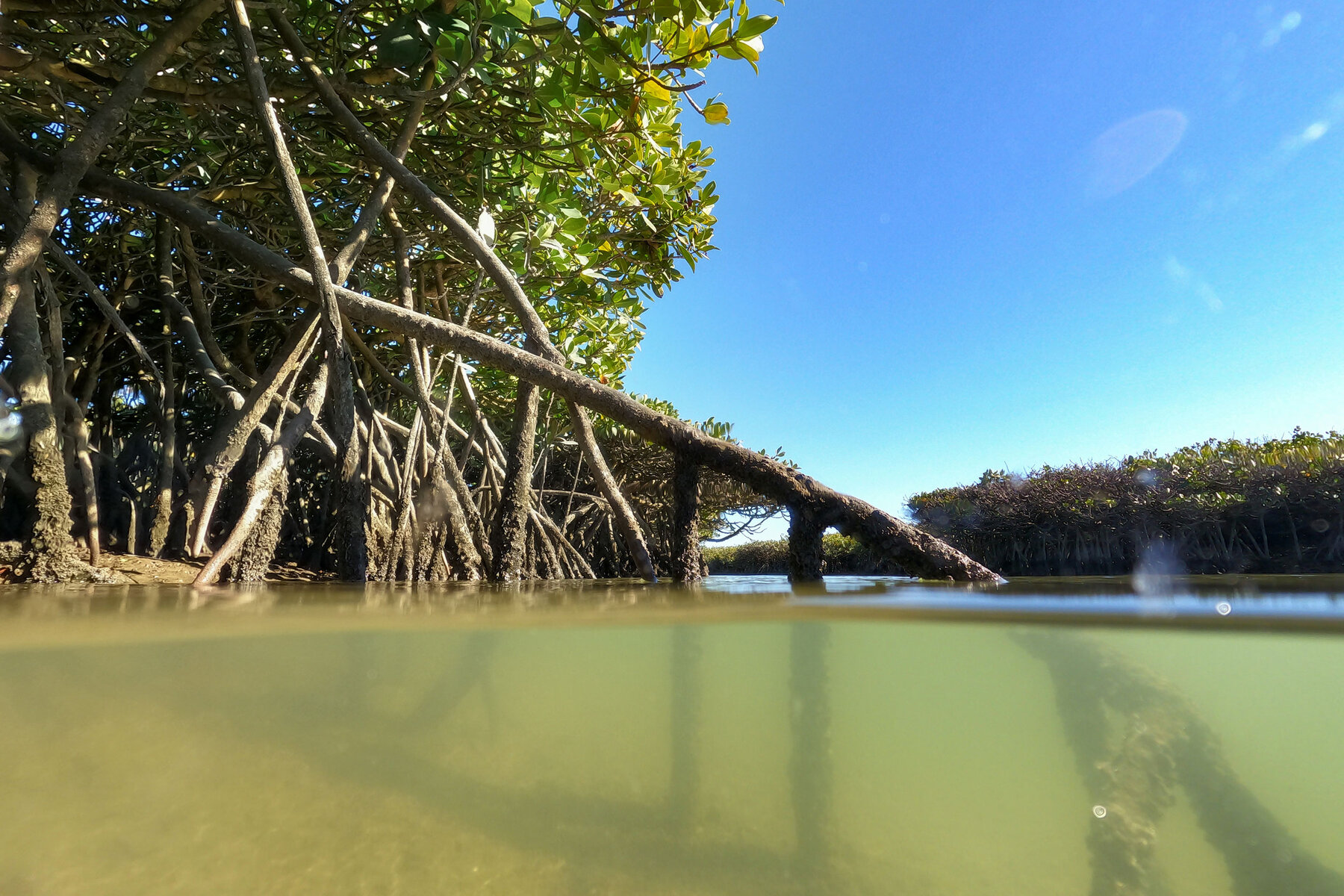
Baja California Sur is the least densely populated state in all of Mexico, and extreme loss of mangroves is concentrated in the urban spaces of La Paz and Los Cabos. Construction of fishing camps around El Delgadito in the 1980s led to the removal of some of the area’s mangroves, but nothing has done as much damage in recent years as climate change, says Borbón. Higher tides and stronger currents undercut the sandbars that support the mangroves, carving underwater caves that eventually cause the entire root system to collapse, especially among younger trees.
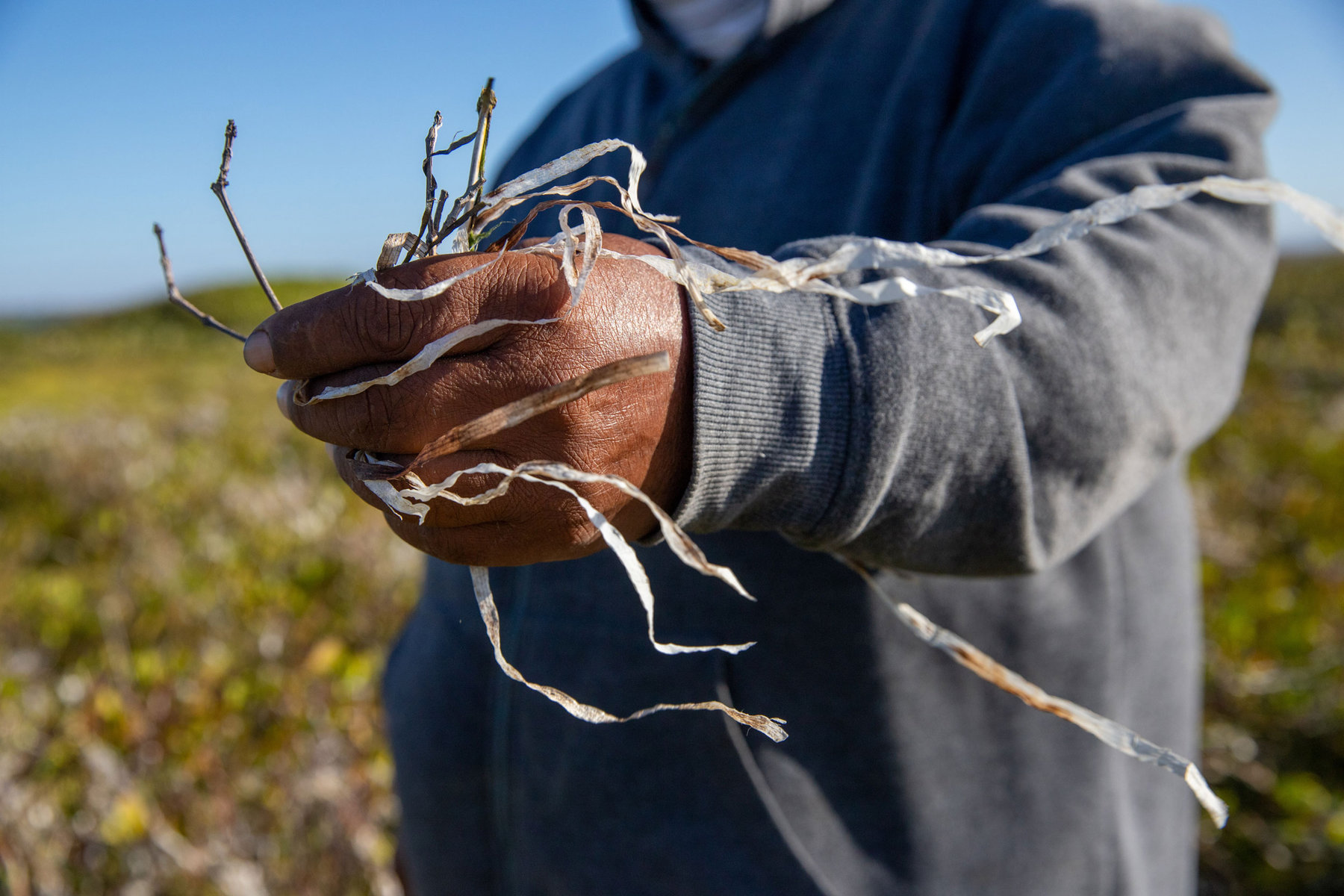
Though never formally trained in the sciences, Borbón has an incredible aptitude and devotion toward experimentation. Taking what he knew from being raised in an agricultural region of Mexico, he carried out early iterations of his work growing mangroves in a greenhouse. He soon found that the young trees couldn’t handle the shock of being transplanted, so he and Peralta started “playing scientists,” as he calls it, planting propagules in the places surrounding El Delgadito where they ultimately wanted them to grow. Over the years, they have perfected the process to a point where they may very well know more than anyone else about growing mangroves in this desert ecosystem, though they never stop experimenting with new ideas.
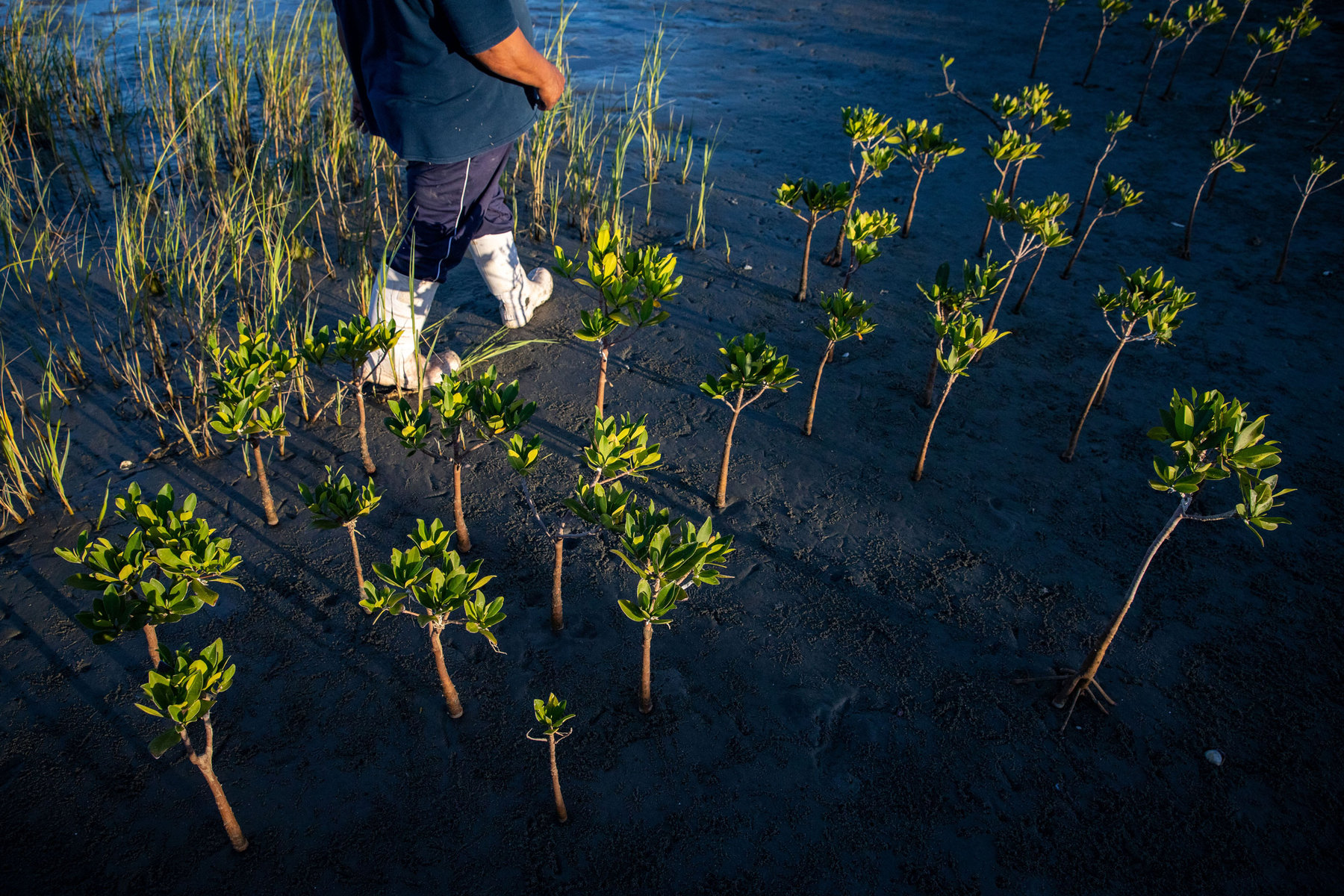
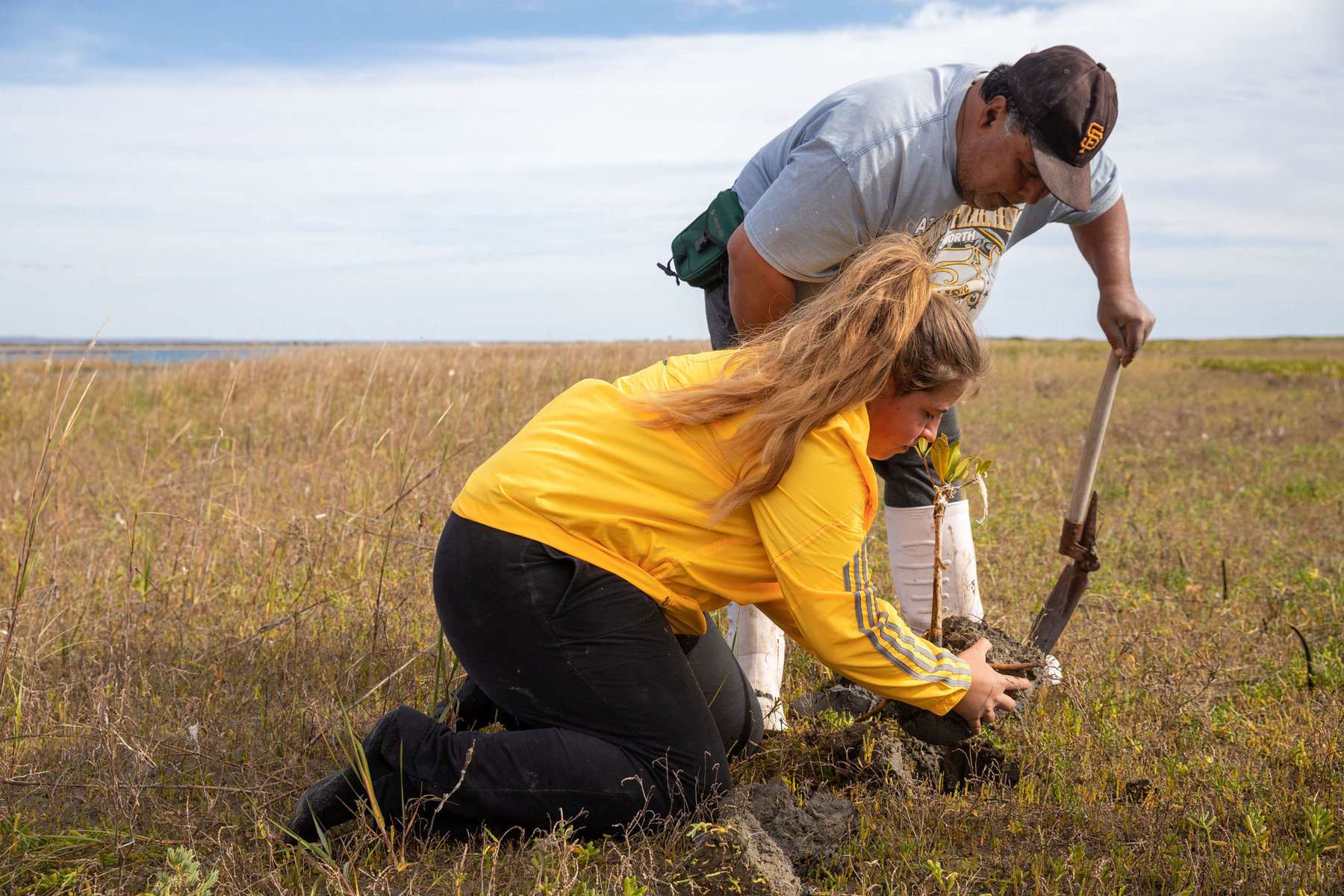
During the summer months, they take scouting trips to monitor the development of new red mangrove propagules and tend young trees. Come October, they harvest the propagules and soak them in fresh water for just over a week. At the restoration site, one person walks a transect line using a wooden tool to punch a small hole into the sediment while another follows with the propagules. It takes just a second to plant each one, and over the past 12 years they’ve planted an estimated 1.2 million and watched stretches of bare sand transform to green. It’s still too soon to see the impact on local fisheries, but Borbón has no shortage of hope: “The fact that we plant mangroves generates life. We expand the possibilities of helping nature by allowing them to naturally repopulate and recover.” He adds that the “constant attack” from fishing limits recovery, but he’s not deterred. “That is why it is so important that we continue with our efforts.”
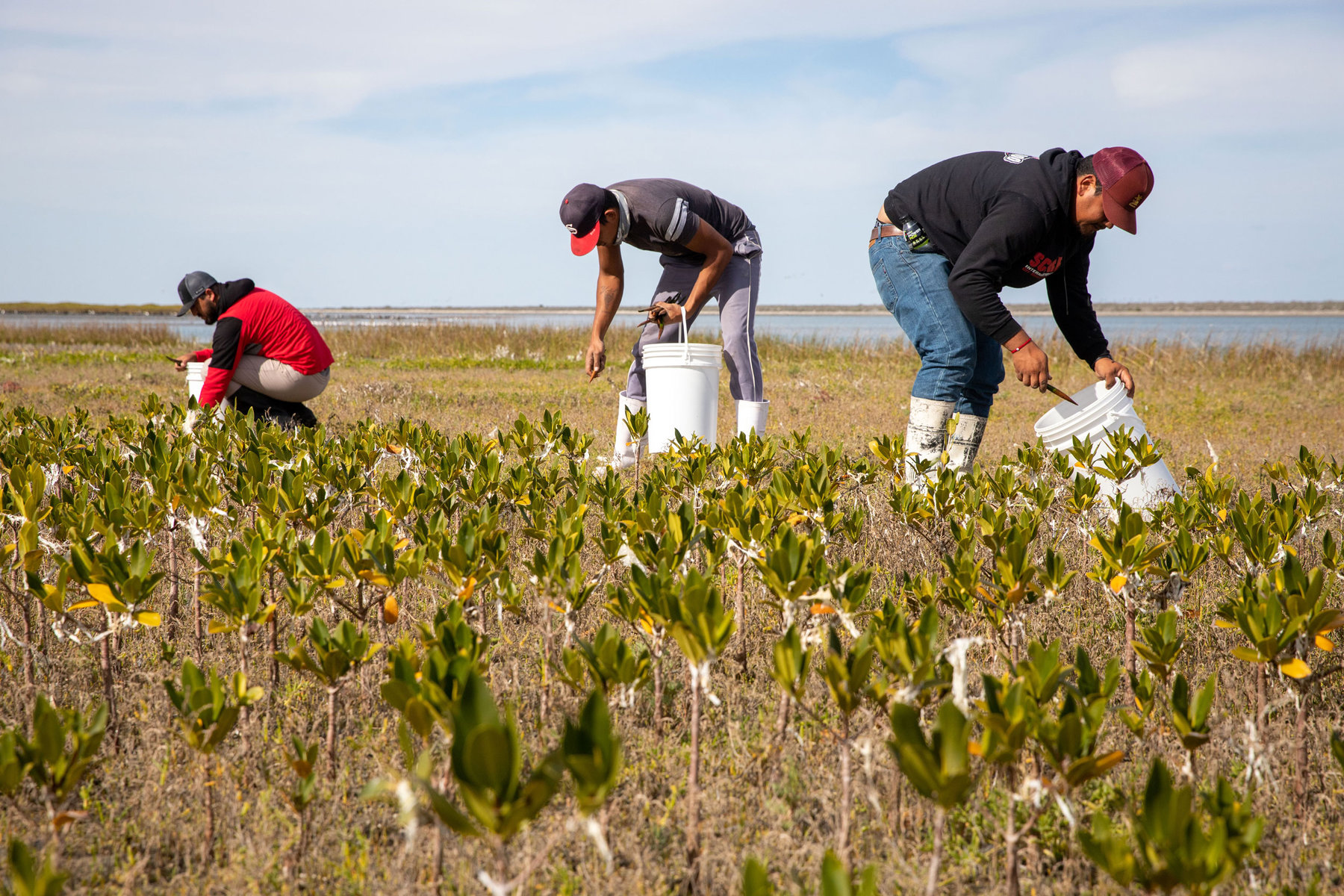
In early September 2022, Hurricane Kay made landfall several hours north of El Delgadito. Colder surface waters on the Pacific coast of Baja California have historically made it rare for a storm system to make its way this far north along the peninsula. Mangroves have been shown to absorb 70 to 90 percent of a wave’s energy, and the storm put Borbón and Peralta’s work to the test. Areas that had their first mangroves planted 10 years prior were destroyed, leaving almost nothing but sand where the highest branches once reached overhead. The couple was devastated, and Borbón’s eyes filled with tears when he broke the news to me. He estimates that, in addition to those first trees he planted, close to 300,000 young trees were lost. Soon after, a marine biologist friend brought an impact assessment expert from the US National Oceanic and Atmospheric Administration to see El Delgadito. She looked at the proximity of the mangroves that had been destroyed to the community and told the couple that their work very likely prevented the loss of much of their community.
Weighed down by negative news?
Our smart, bright, weekly newsletter is the uplift you’ve been looking for.The researcher’s comments provided hope for the future and validation to Borbón and Peralta that their efforts weren’t for naught. Today, looking out from the driver’s seat in his small boat, Borbón envisions what is to come. “My dream for this region has no limits; what can be done is wonderful. We have dedicated ourselves to conservation because it is very clear to me that the day mangroves end, life ends in this region.” Tomorrow, he’ll wake at dawn and drink a cup of coffee before driving down the road to his boat, never missing a beat in his dedication to making his vision a reality.
This article first appeared in Hakai Magazine and is republished here with permission. Read more stories like this at hakaimagazine.com.



